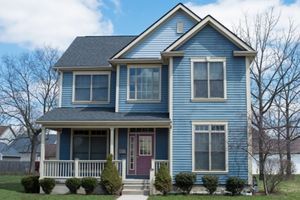Old homes are full of charm and character. Unfortunately, they’re often full of unexpected problems. A fixer-upper can be rewarding, but you have to know what you’re getting yourself into. If you’re looking to buy an older home, make sure you take your time and get as much information as possible. Navigate the market confidently with this list of what to look for when purchasing an older home.
Inspect the Bottom to the Top
The foundation and the roof are two of the most critical parts of a home. Unfortunately, they’re also prone to damage—especially in older properties. As the house settles over time, you can get cracks in the foundation. Wet soil, poor drainage, and roots from trees are also common causes behind foundational damage.
Meanwhile, roof deterioration commonly occurs after years of exposure to the elements. Keep an eye out for missing shingles, damaged gutters, or moisture damage in the attic.
Damage to your foundation or roof will affect the entire house. Repairing these areas can be costly, especially if damage goes unnoticed for a while. Make sure you inspect both the foundation and the roof carefully to assess the kind of repairs or maintenance you’ll need down the road.
Look For Outdated Electrical Systems
Technology is always evolving, which means older electrical systems can’t keep up with all your modern plugs and devices. Outdated outlets, service panels, and circuit breakers are all part of what to look for when purchasing an older home. One thing to look out for is ungrounded outlets, which will only have two prongs. You’ll need to switch these to ground wiring. It’s also a good idea to ask about power outages and keep an eye out for flickering lights as you inspect the house.
Check Insulation Quality
Insulation wasn’t always a priority in home construction. Even if your older home started with quality insulation, there’s a good chance the material has deteriorated due to pests, moisture, or other problems over time. Luckily, there are a few surefire ways to replace the insulation in your older home without damaging the house. By focusing on the insulation now, you can increase your energy efficiency and enjoy a comfortable, cozy home during the winter.
For more tips on buying an older home, check out these posts.
4 Things to Do Before Buying an Older Home


